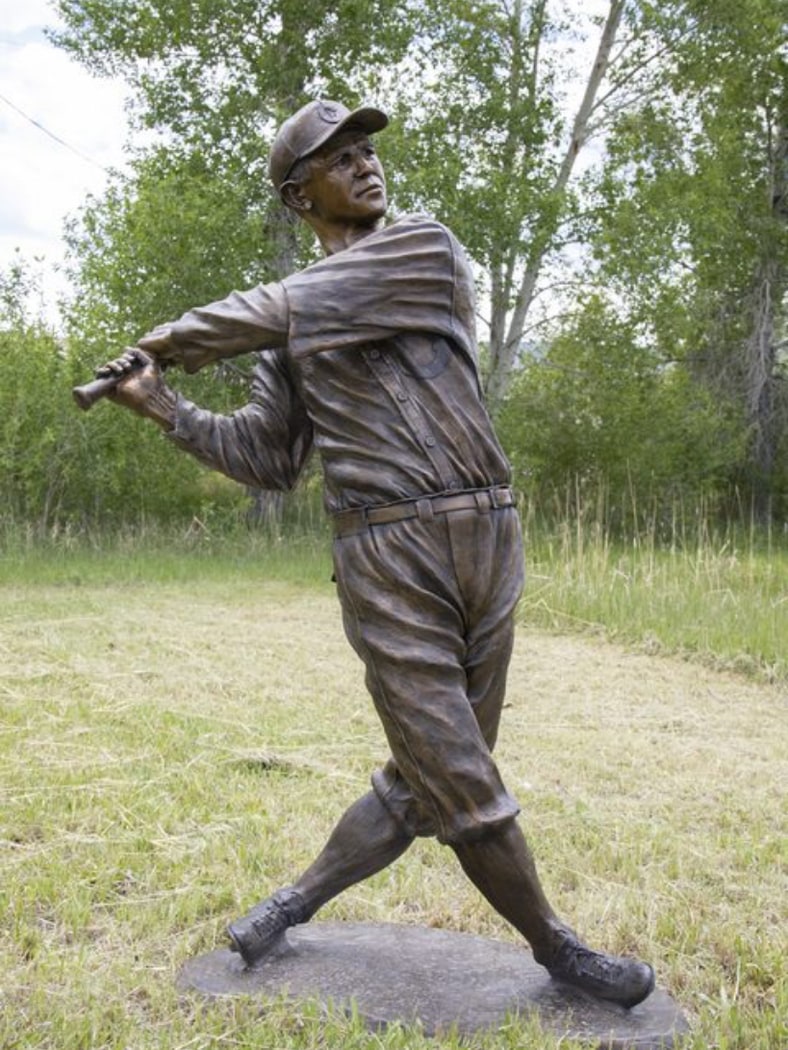The first step was to produce a model known as a maquette in oil-based clay.
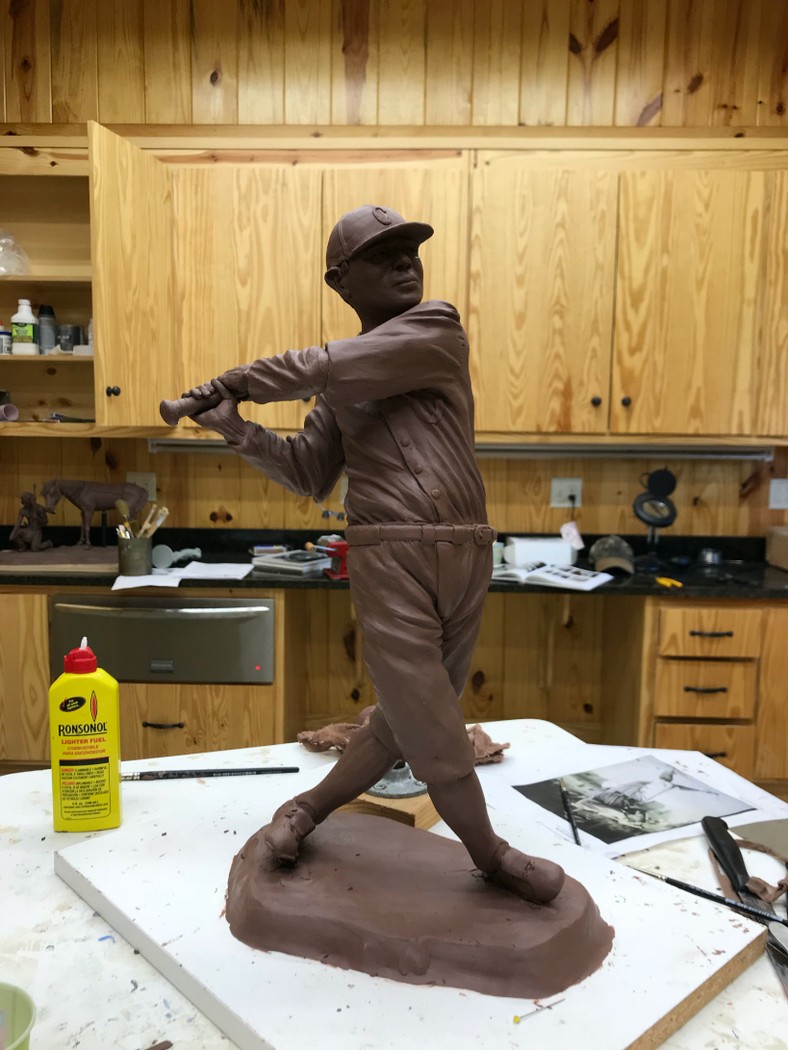
A mold was made and the 18” maquette was reproduced in a resin material that resembles bronze.
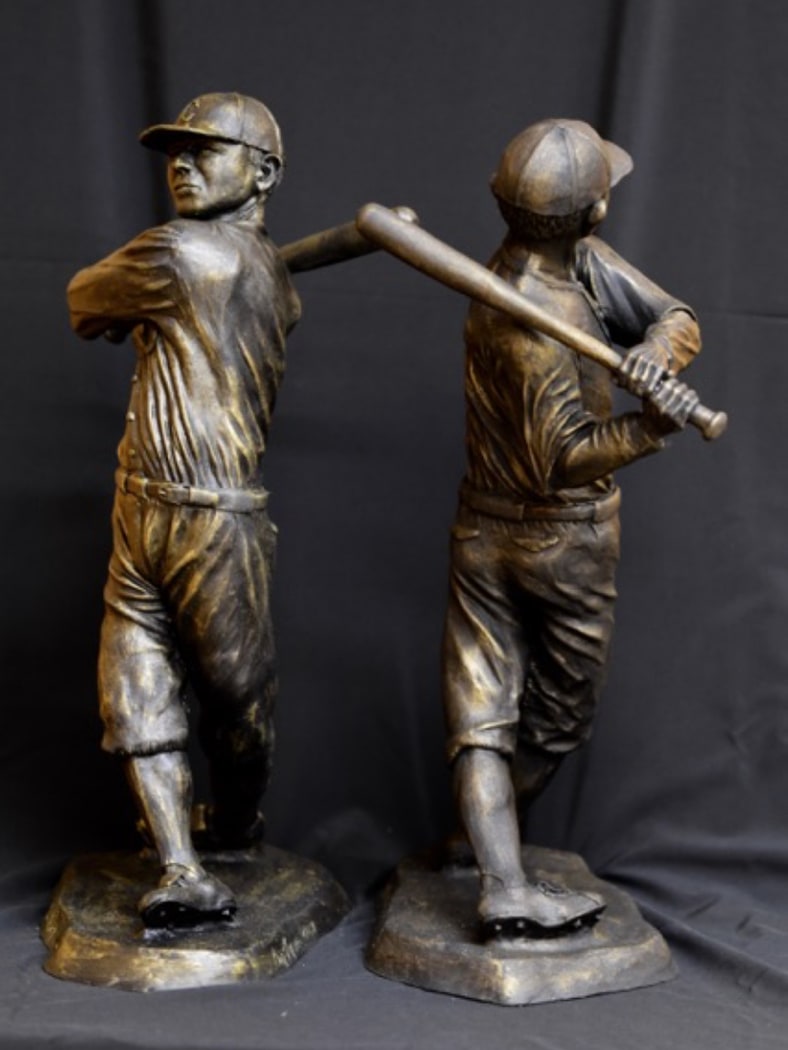
This was then laser scanned to produce a 3D image in the computer. Then a CNC machine milled out a life-sized copy of the maquette minus the surface detail.
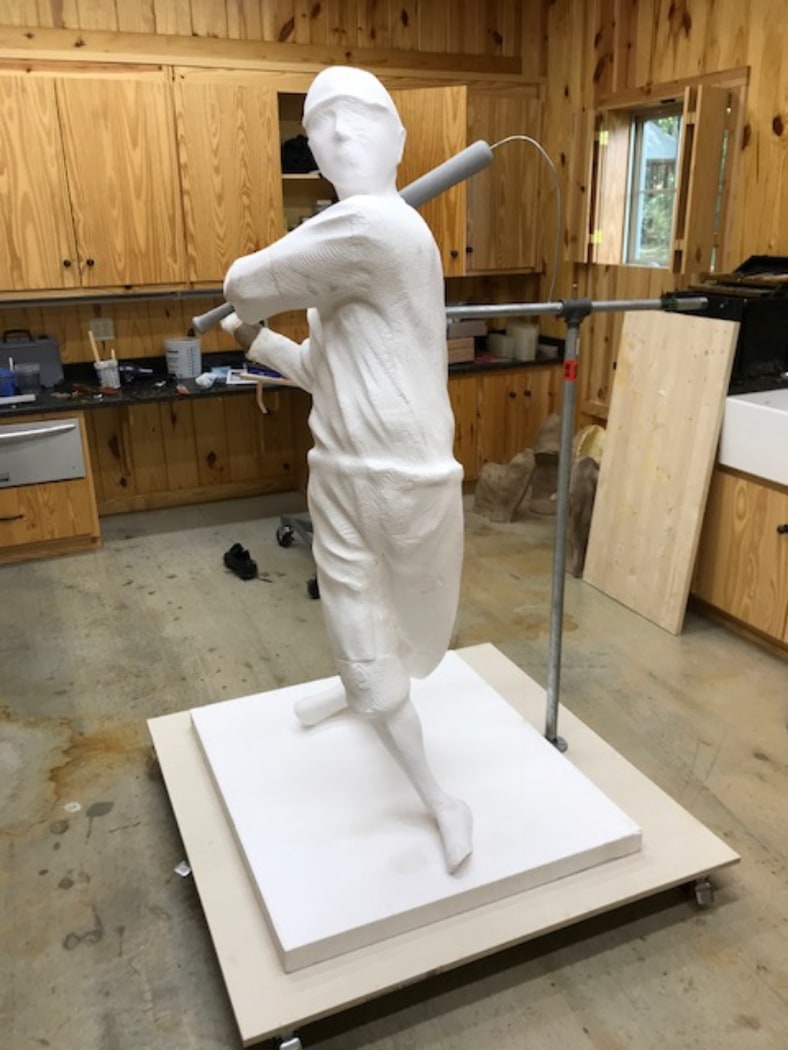
The foam then acts as a support known as an armature for the oil-based clay that was used to resculpt the surface details.
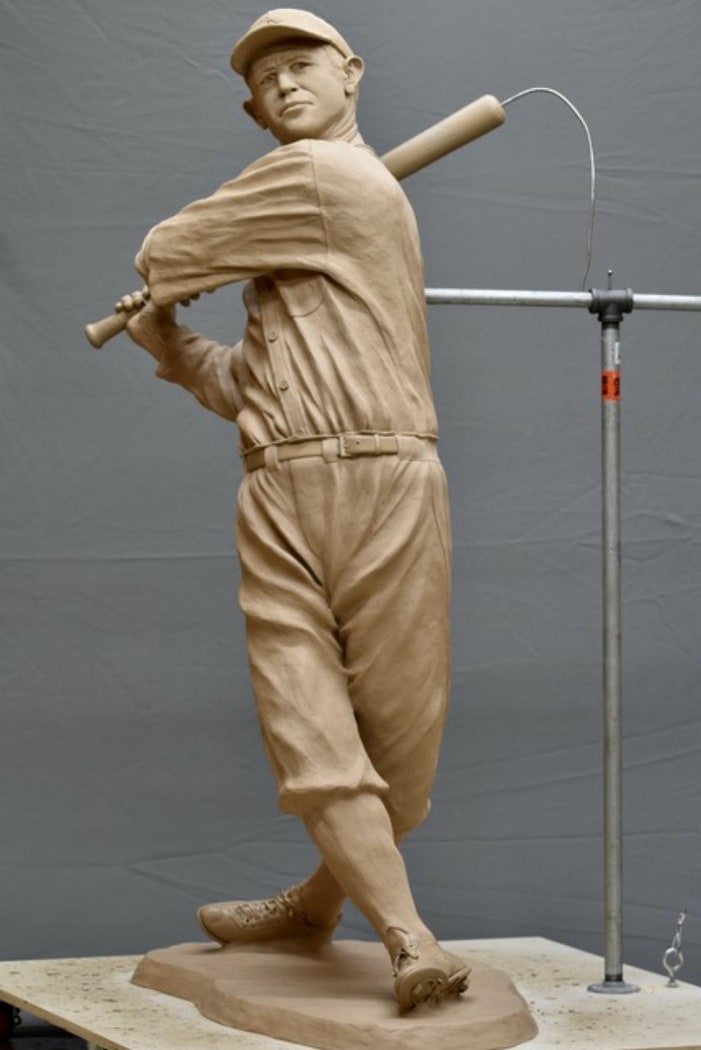
The sculpture is then divided into sections by metal shims and layers of silicone rubber are applied to form the mold.
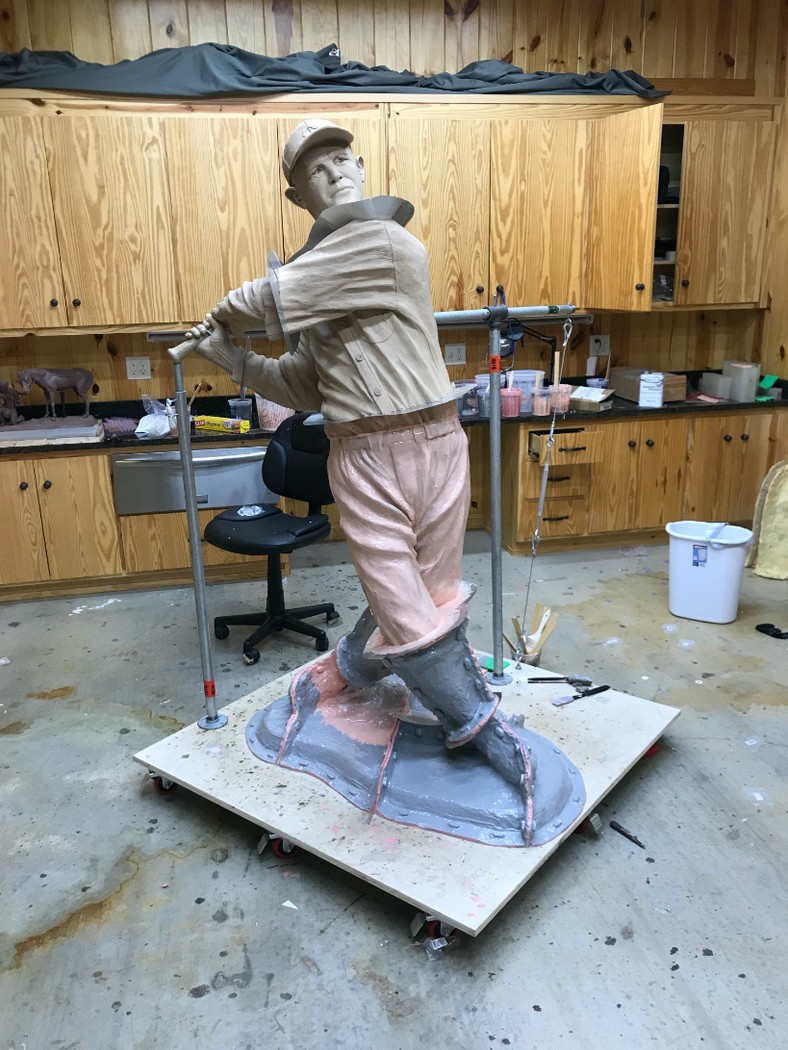
After building up the silicone to approximately 3/8”, a rigid outer shell or mother mold was constructed out of multiple layers of epoxy.
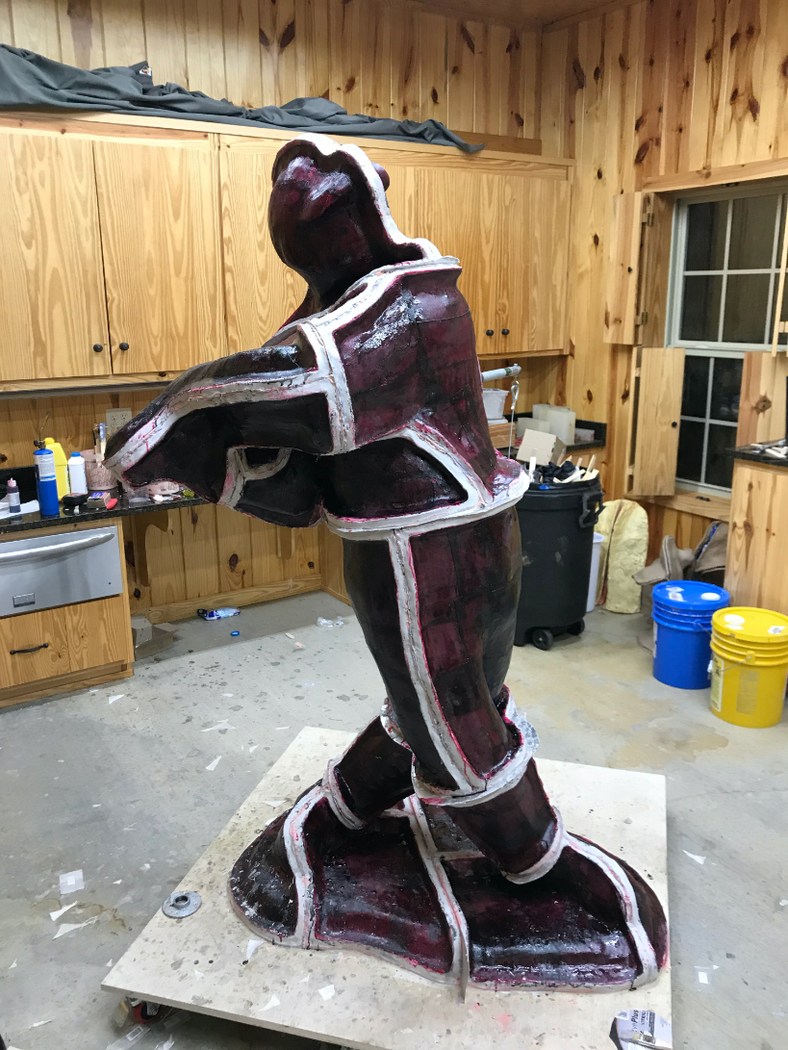
The pieces of the mold are then removed from sculpture and are ready to ship to the foundry
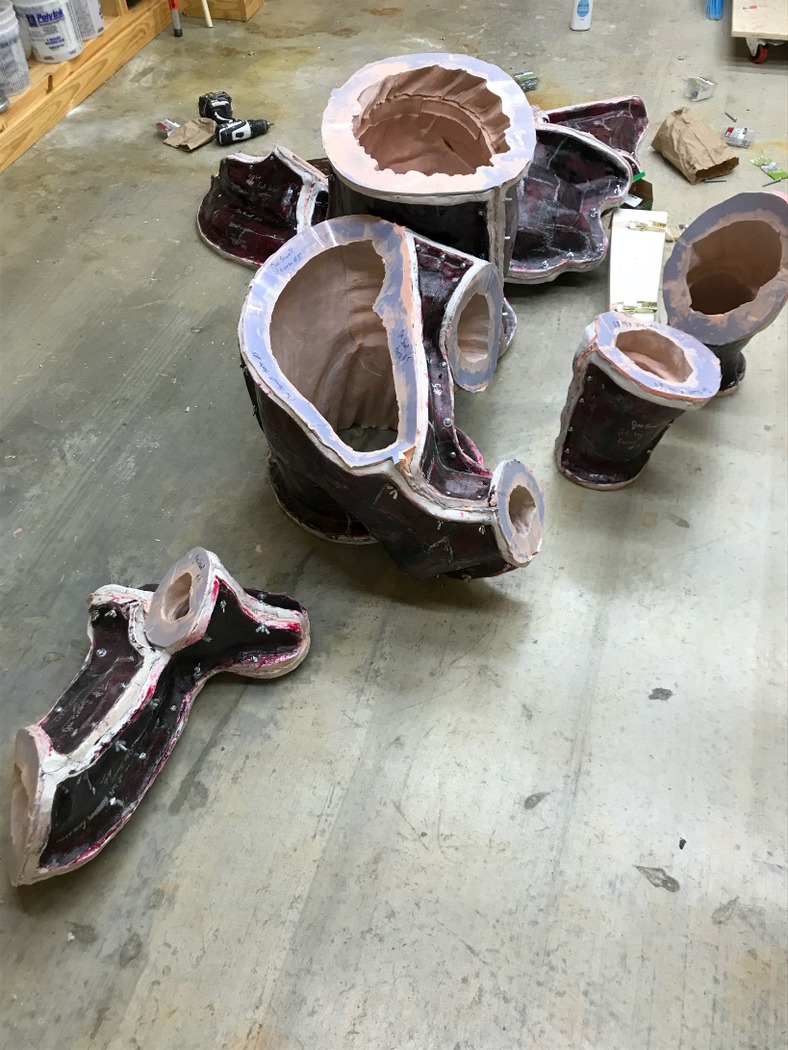
At the foundry, wax is poured in the molds to produce wax duplicates of each piece of the sculpture.
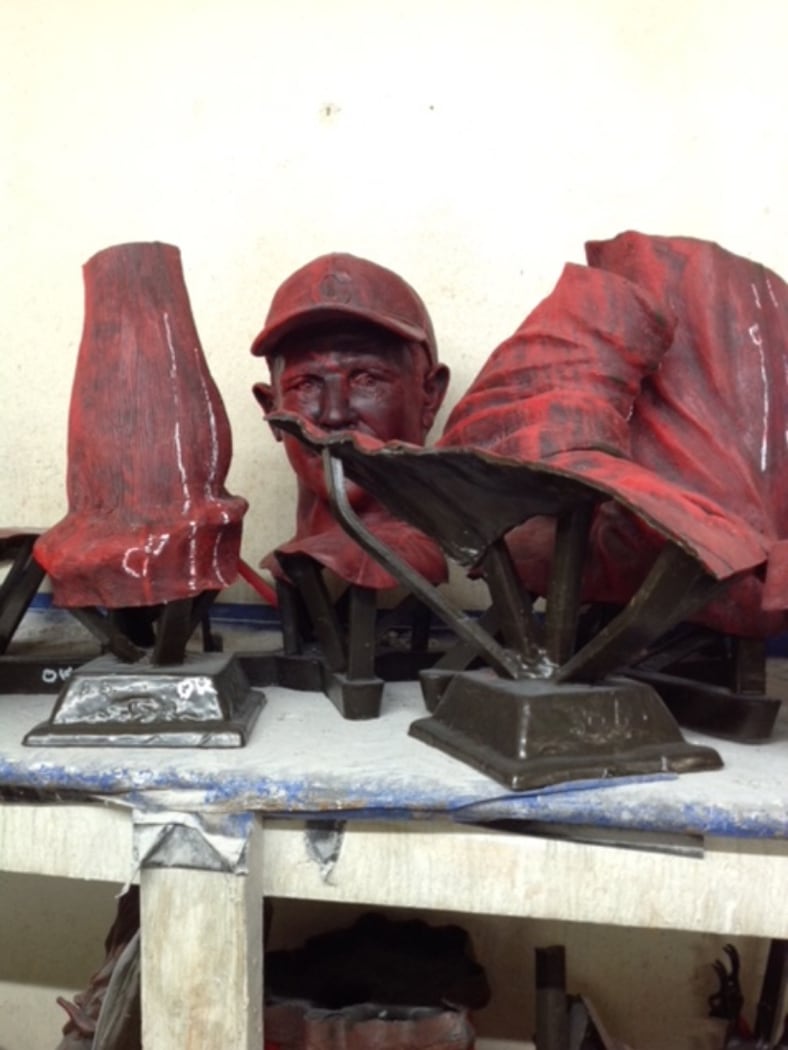
The wax pieces are then covered with a ceramic shell.
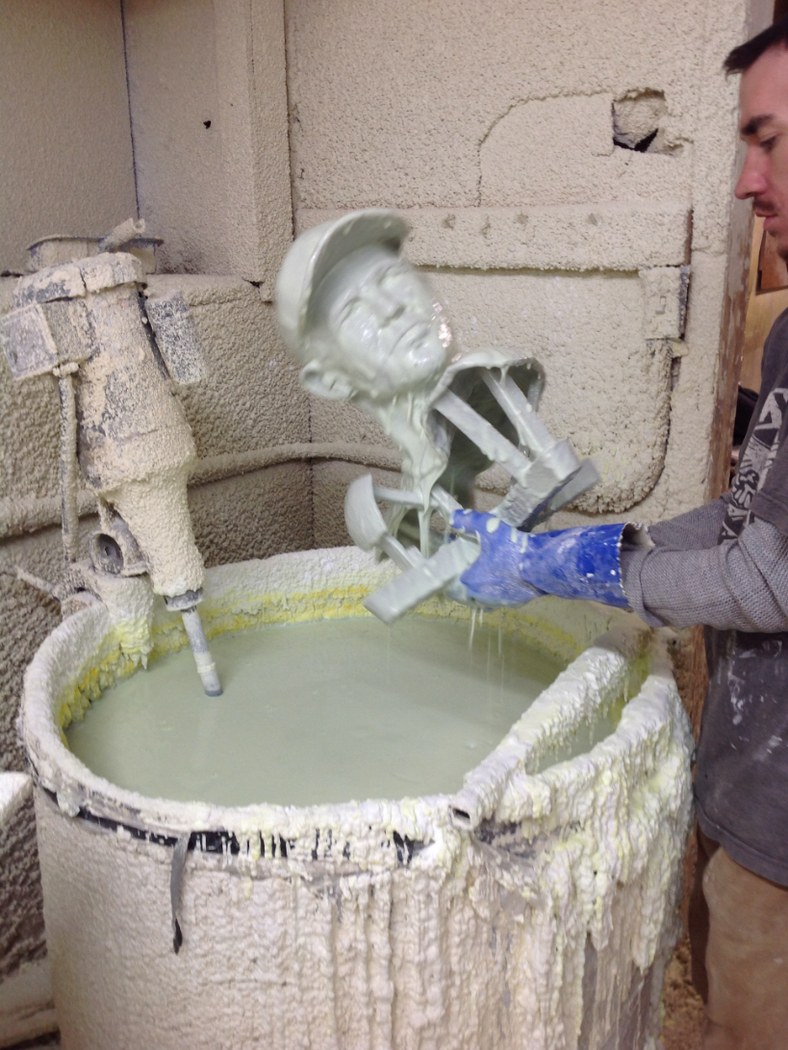
The ceramic pieces are then placed in an oven and the wax is melted away. Molten bronze is then poured into the ceramic shell.
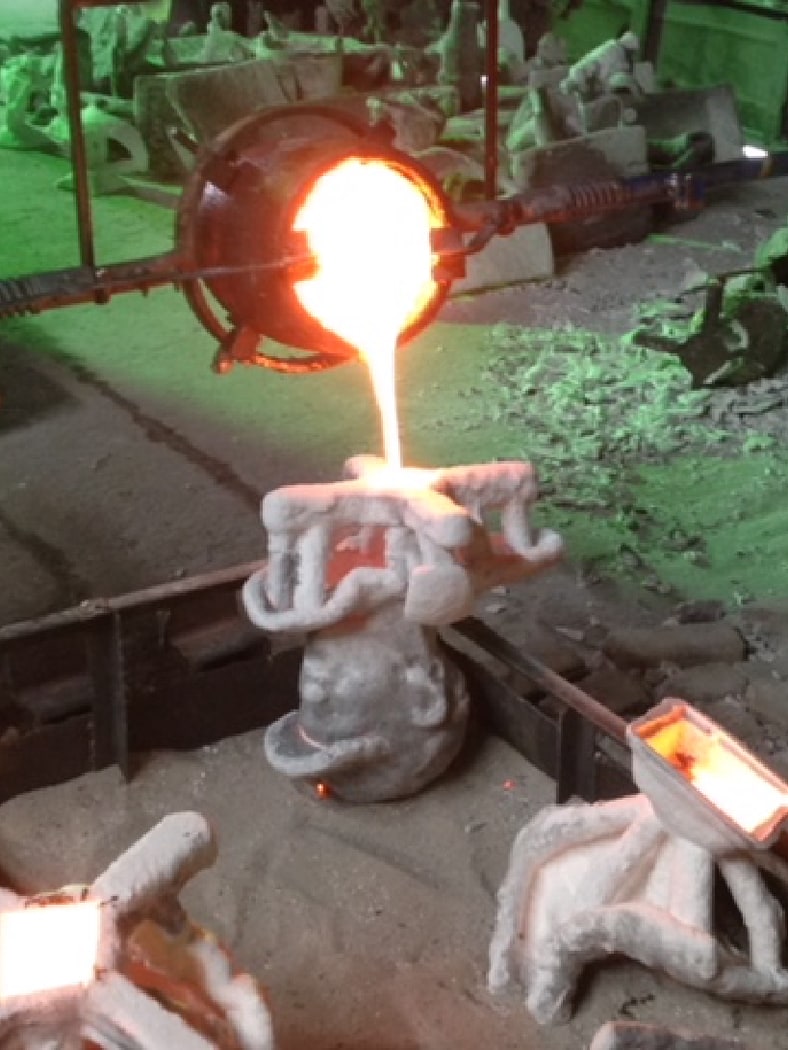
Once the bronze cools, the ceramic shell is broken away and the resulting bronze pieces are welded together to reassemble the sculpture.
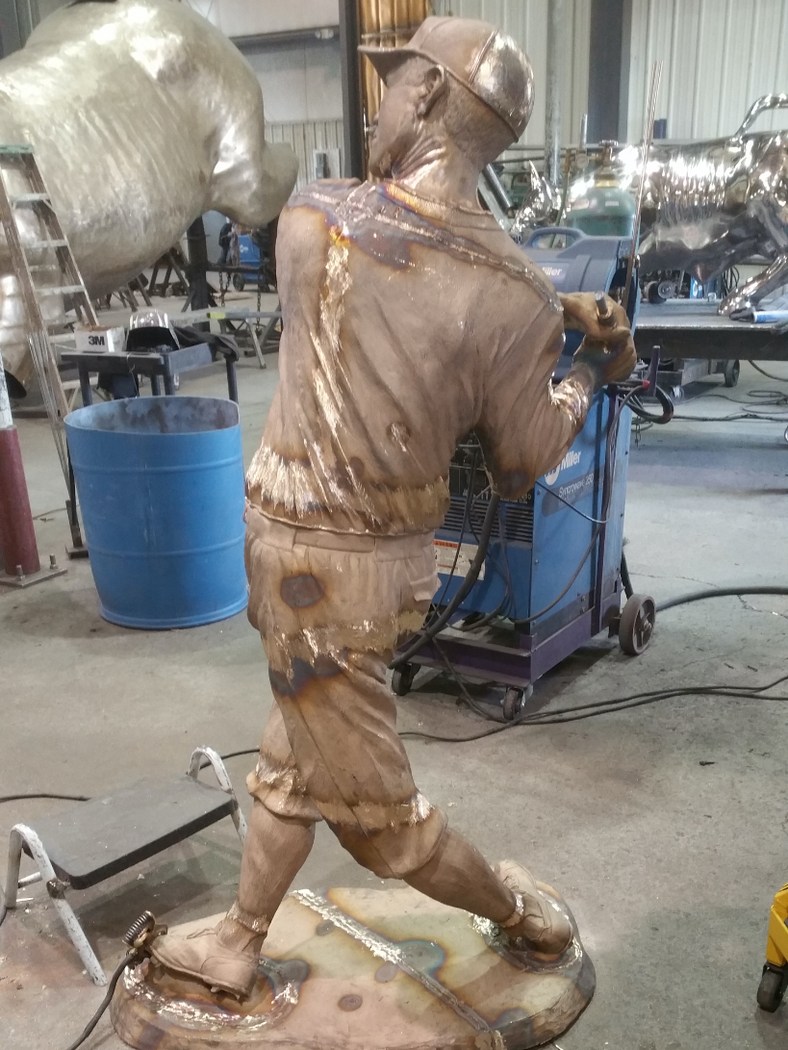
The welds are finished down and the surface textured to hide the weld lines. Then, chemicals are applied to the surface to produce the desired color or patina.
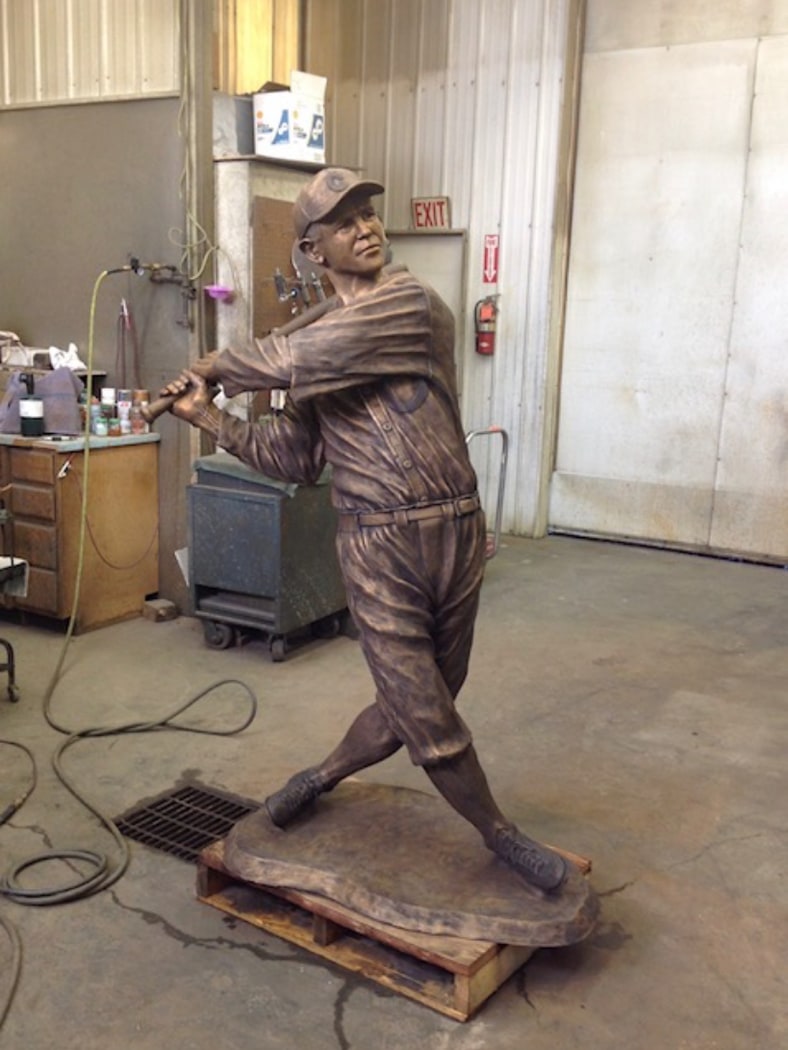
A final coat of lacquer helps seal the surface and protect the patina. The sculpture is now ready for installation!
